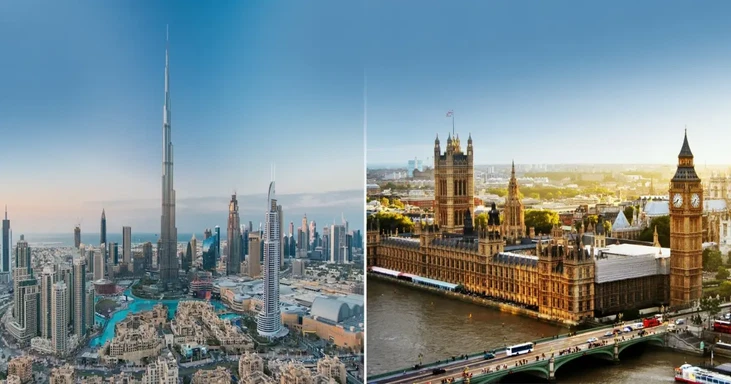
Dubai vs London Real Estate Market Comparison 2025
Published :
Last Updated :

Published :
Last Updated :
Dubai and London are some of the leading real estate investment destinations across the globe. The two cities are appealing to international investors who want to make good returns. Dubai is a place with free property ownership and high rental returns. However, there is a mature and stable investment environment in London.
The aspects of this comparison include prices, ROI, ownership laws and taxation. It assists investors in realizing which market suits them. Through the major trends, we are going to uncover the strong and weak points of the two cities.

By the halfway of 2025, the real estate transactions value in Dubai amounted to around AED 431 billion, increasing by 25% annually. The volume of transactions also increased 26% in the same period to 125,538 deals in comparison to H1 2024.
Q2 2025 alone registered 50,593 transactions amounting to AED 170.53 billion. It is equivalent to a 15% increase and 27% increase in volume and value, respectively, as compared to Q1. Residential real estate prices per square foot reached about AED 1,793 in the second quarter of 2025.
The Q1 2025 was characterised by apartments, which comprised 31,270 deals estimated at approximately AED 59.35 billion. The market is still a powerful force of government policies, including zero property tax and freehold zones.
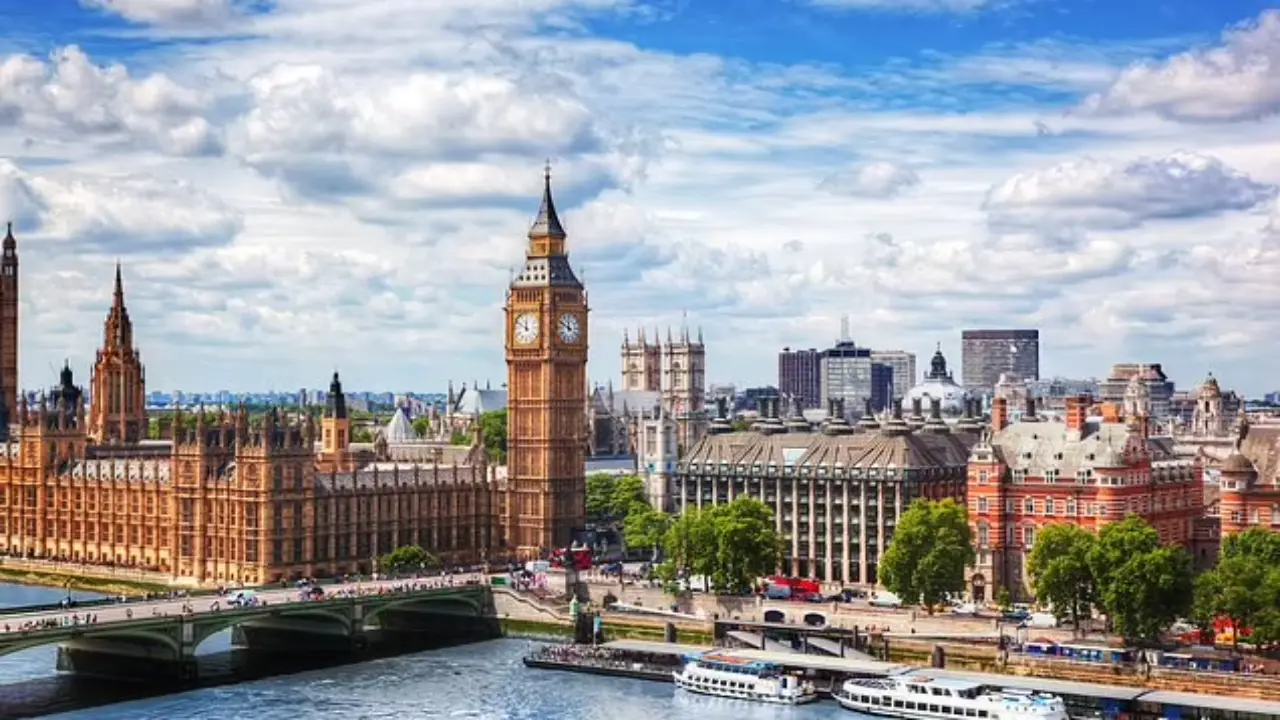
The average house price in London stood around £552,000 in March 2025, representing an increase of 0.8% per annum. In April 2025, the average price had gone up to approximately £567,000, a year-on-year up of 3.3%.
In prime central boroughs (e.g., Chelsea, Kensington, Westminster), values had gone past £1.2 million in 2025. In outer boroughs, the average was £350,000 to £450,000. The London market is stable with moderate growth and an increased cost of entry, in contrast with the emerging market.
Dubai provides facilitated entry, reduced financing requirements and expedited approvals.
Whereas London offers a more developed legal and lending infrastructure, but needs a greater financial demonstration.
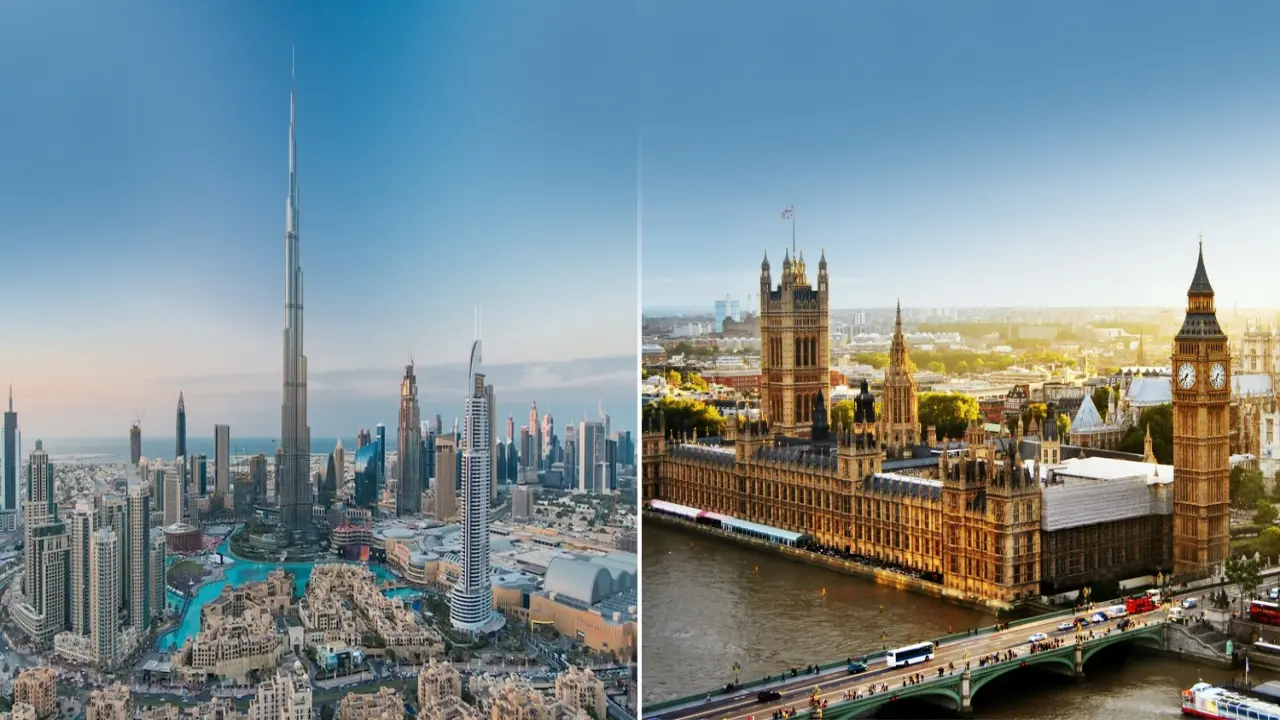
Such data means a high level of interest among investors, high-net-worth migration, and beneficial policy is enhancing the luxury pipeline.
Although it is prestigious, oversupply in certain segments and longer stay on the market have shifted the bargaining power to the buyer.
Both markets should be subjected to deep due diligence. Verify the property condition, service charges, lease conditions (particularly in London), and macro-factors (exchange rates, tax policy, regulation) which may have an impact on returns.
It is estimated that a high momentum of the real estate market in Dubai will persist in the year 2026. The confidence of the investors is also high as there are business-friendly policies, an increasing population, and economic growth. The real estate sectors of prime and luxury properties are still in high demand by Buyers worldwide.
Further stimulating growth are new mega-developments, infrastructure development and sustainability projects. Long-term visa programmes and tax incentives also help in supporting demand.
The property market in London is recording slow improvements following a slowdown in performance in the market. Analysts estimate the growth of prime areas to be 2-4% annually to 2026. Mortgage rates can be relaxed a bit, which will enhance the decision of buyers. The increase in living expenses and tight lending policies, however, will ensure that the market is not booming and falling.
Ultra-rich investors would probably continue to show interest in international destinations, particularly in heritage and central destinations. A weaker pound may also boost demand as it will give superior value to foreign buyers.
Dubai and London have their own unique real estate opportunity; however, the process of market processes in each case are evidently different. Dubai is more promising with a high growth rate, fewer barriers to foreign investment, and high demand for luxury. London, in its turn, is a representation of stability, tradition, and security of assets in the long run.
Dubai can attract investors with rapid growth and an opportunity to be flexible. In comparison, London can attract investors who tend to value stability and international prestige. Finally, the most appropriate option lies in investment objectives, riskiness, and strategy.

Your gateway to offline planning in the digital realm. Discover a world of real estate opportunities through our immersive offline property website experience
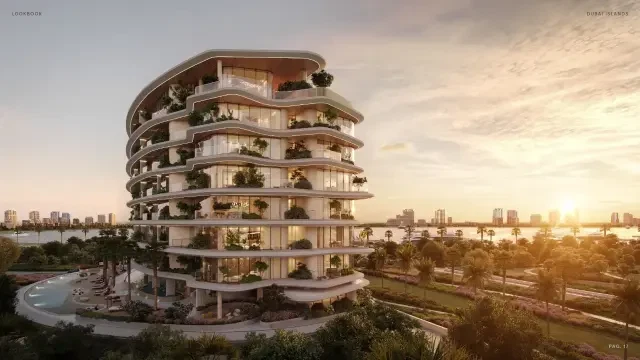
Apartments
Penthouses
AED 2,200,000
Dubai Islands
1, 2 & 3
825 - 5,610 Sq Ft
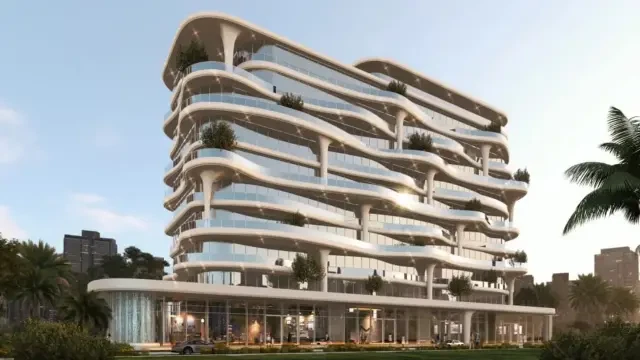
Apartments
AED 1,950,000
Meydan
1, 2 & 3
798 - 2,015 Sq Ft
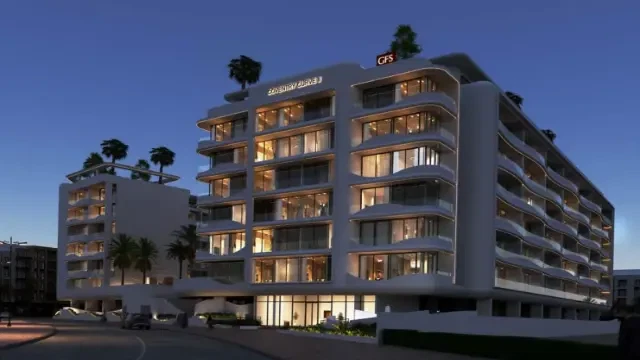
Apartments
Studios
AED 482,000
Dubai South
Studio & 1

Apartments
Studios
AED 1,250,000
Dubai Internet City
studio & 1

Villas
Plots
AED 17,500,000
Dubai Hills Estate
5 & 6
12,917 - 25,913 Sq Ft

Villas
Mansions
AED 20,000,000
Mohammed bin Rashid City
5 & 6
13,007 - 13,568 Sq Ft

Apartments
Penthouses
AED 2,200,000
Dubai Islands
1, 2 & 3
825 - 5,610 Sq Ft

Apartments
AED Coming soon
Dubai Maritime City

Apartments
Studios
AED 1,250,000
Dubai Internet City
studio & 1

Apartments
Studios
AED 482,000
Dubai South
Studio & 1

Apartments
AED 1,950,000
Meydan
1, 2 & 3
798 - 2,015 Sq Ft

Apartments
Studios
AED 900,000
Jumeirah Garden City
Studio, 1 & 2
465 - 2,236 Sq Ft

Commercial
AED Coming soon
Business Bay

Apartments
Commercial
AED 1,900,000
Sheikh Zayed Road
1, 2 & 3

Apartments
Commercial
AED 1,142,000
Damac hills
1 & 2
740 - 6588 Sq Ft
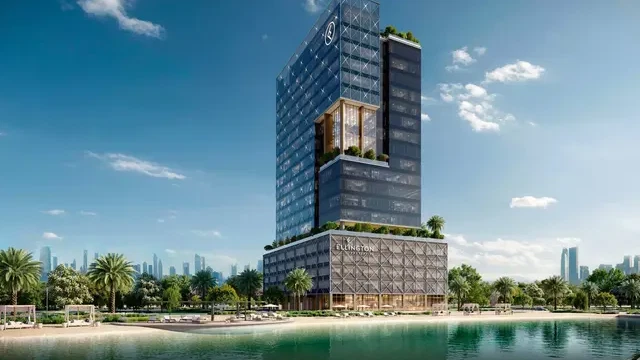
Commercial
AED Coming soon
Mohammed bin Rashid City

Apartments
Penthouses
Duplexes
AED Coming soon
Dubai Islands
1, 2, 3 & 4
800 - 5964 Sq Ft

Apartments
Penthouses
Duplexes
AED 1,700,000
Dubai Islands
1, 2, 3 & 4
800 - 5964 Sq Ft

Apartments
Townhouses
Duplexes
Studios
AED 800,000
Dubai Land Residence Complex
Studio, 1, 2, 3 & 4
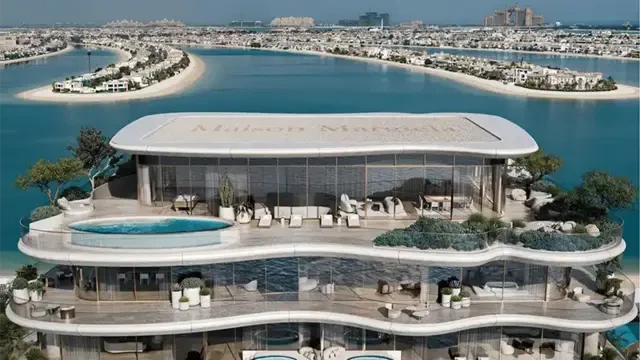
Apartments
Penthouses
Duplexes
AED 16,500,000
Palm Jumeirah
2, 3, 4 & 5
2572 - 18804

Apartments
Studios
Duplexes
AED 650,000
Jumeirah Village Triangle
Studio, 1, 2, 3 & 4
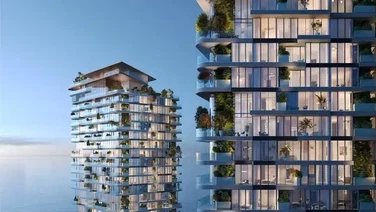
Apartments
Penthouses
Duplexes
AED 2,530,000
Dubai Maritime City
1, 2, 3, 4 & 5
839 - 15984 Sq Ft

Villas
Mansions
AED 20,000,000
Mohammed bin Rashid City
5 & 6
13,007 - 13,568 Sq Ft
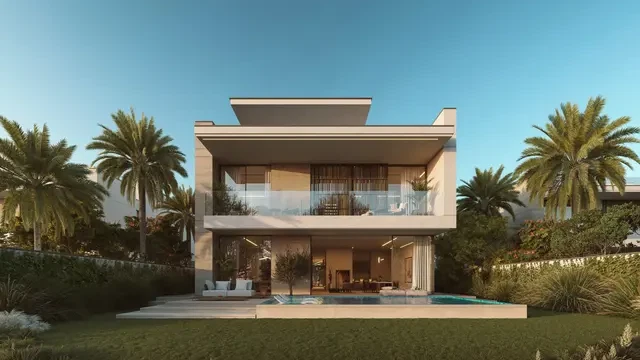
Villas
Mansions
AED 11,800,000
Jumeirah Golf Estates
4, 5 & 6
6069 - 10762 Sq Ft
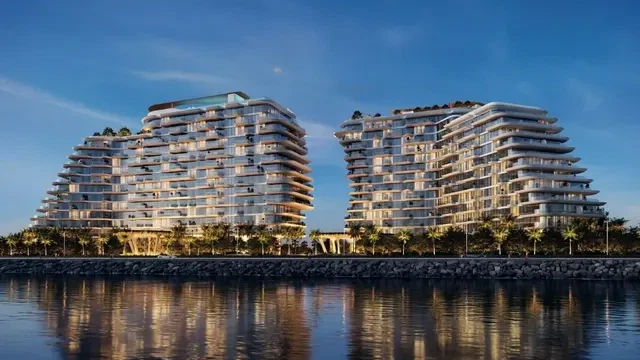
Apartments
Penthouses
Mansions
AED 5,500,000
Palm Jumeirah
1, 2, 3, 4, 5 & 6
940 - 11830 Sq Ft

Mansions
AED 65,000,000
Jumeirah
7
41550 - 49062 Sq Ft

Mansions
AED Coming soon
Tilal Al Ghaf
6 & 7

Mansions
AED Coming soon
Tilal Al Ghaf

Apartments
Penthouses
AED 2,200,000
Dubai Islands
1, 2 & 3
825 - 5,610 Sq Ft

Apartments
Penthouses
AED 1,900,000
Dubai Islands
1, 2 & 3

Apartments
Penthouses
AED Coming soon
Dubai Maritime City
1, 2 & 3

Apartments
Penthouses
Duplexes
AED Coming soon
Dubai Islands
1, 2, 3 & 4
800 - 5964 Sq Ft

Apartments
Penthouses
Duplexes
AED 1,700,000
Dubai Islands
1, 2, 3 & 4
800 - 5964 Sq Ft
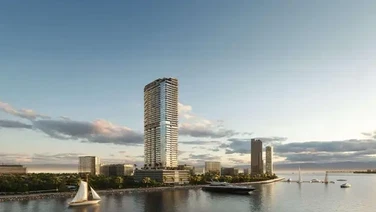
Apartments
Penthouses
AED 2,370,000
Dubai Maritime City
1,. 2 & 3
778 - 5542 Sq Ft

Apartments
Studios
AED 1,250,000
Dubai Internet City
studio & 1

Apartments
Studios
AED 482,000
Dubai South
Studio & 1

Apartments
Studios
AED 900,000
Jumeirah Garden City
Studio, 1 & 2
465 - 2,236 Sq Ft
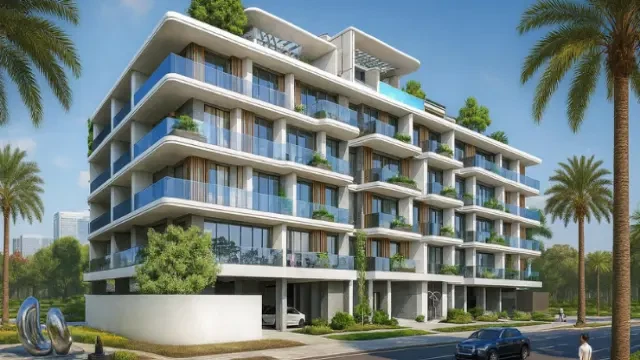
Apartments
Studios
AED 690,000
Dubai South
Studio, 1 & 2
525 - 1,013 Sq Ft
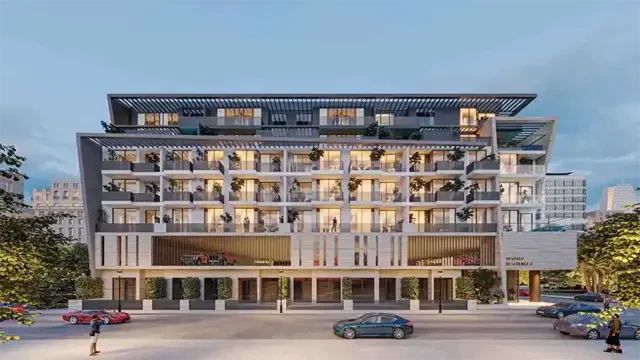
Apartments
Studios
AED 660,000
Jumeirah Village Circle
Studio, 1 & 2

Apartments
Studios
AED 774,999
Motor City
Studio, 1, 2 & 3

Villas
Townhouses
AED 6,150,000
Nad Al Sheba
3, 4 & 5
3252 - 5650 Sq Ft

Villas
Townhouses
AED Coming soon
Dubai Investments Park

Townhouses
AED Coming soon
Damac Islands 2

Townhouses
AED Coming soon
Damac Islands 2

Townhouses
AED Coming soon
Damac Islands 2
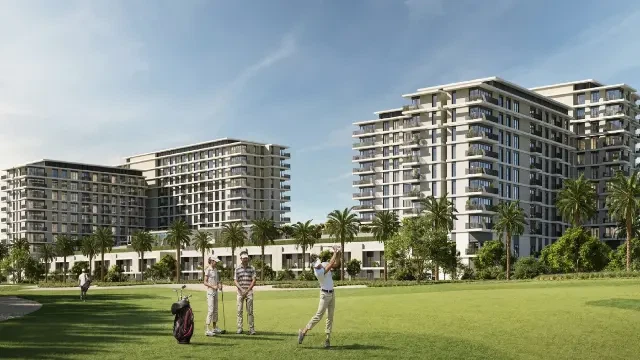
Apartments
Townhouses
AED 1,060,000
Emaar South
1, 2 & 3
671 - 3,081 Sq Ft

Villas
Plots
AED 17,500,000
Dubai Hills Estate
5 & 6
12,917 - 25,913 Sq Ft

Villas
Mansions
AED 20,000,000
Mohammed bin Rashid City
5 & 6
13,007 - 13,568 Sq Ft

Villas
AED 7,300,000
The Valley
4 & 5
4346 - 7857 Sq Ft

Villas
AED 7,090,000
The Valley
4 & 5
4345 - 7853 Sq Ft

Villas
Townhouses
AED 6,150,000
Nad Al Sheba
3, 4 & 5
3252 - 5650 Sq Ft

Villas
Townhouses
AED Coming soon
Dubai Investments Park
Subscribe to our Daily, Weekly and Monthly Newsletters, Expert Advice and Latest Launch with Zero Spam, Unsubscribe Anytime.